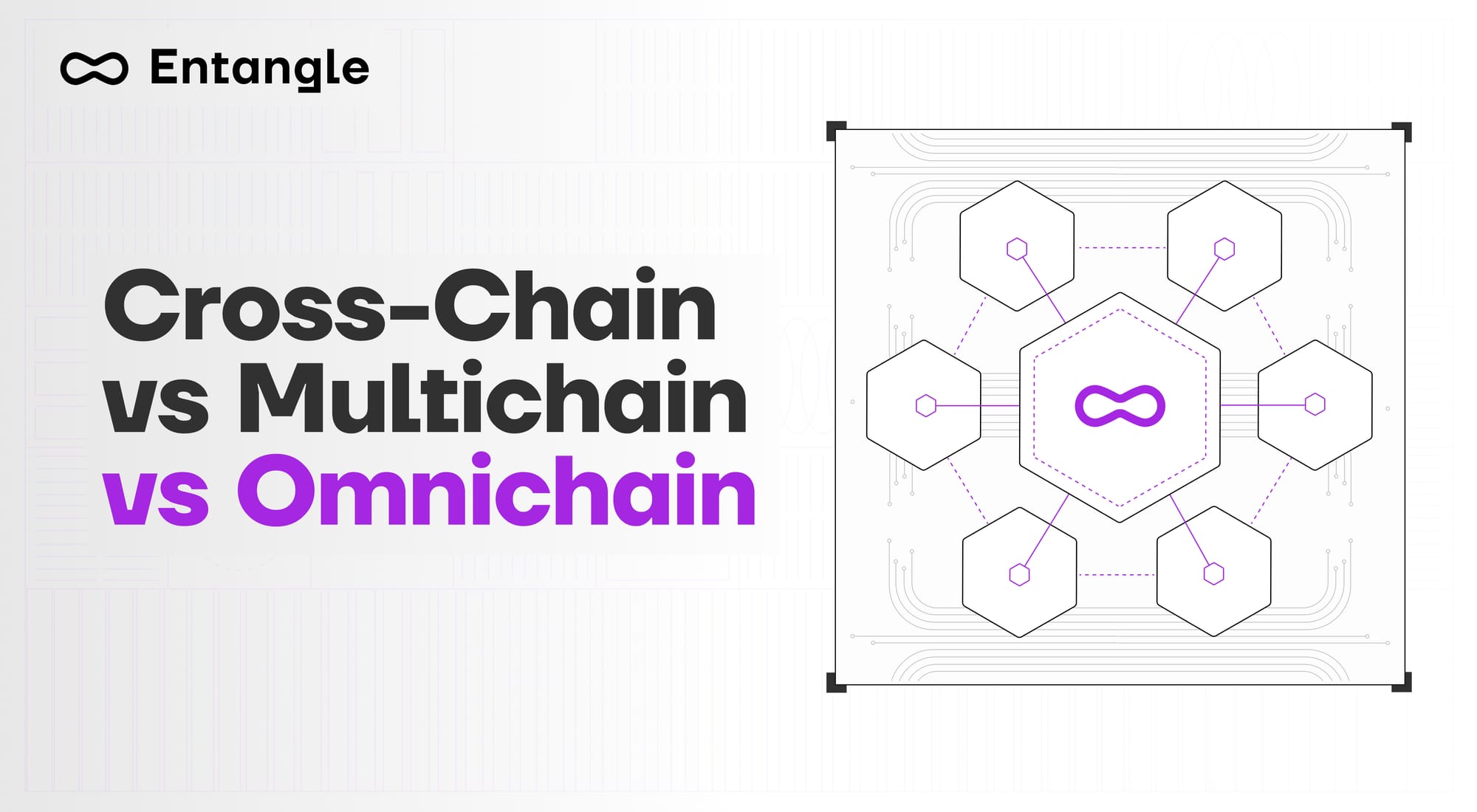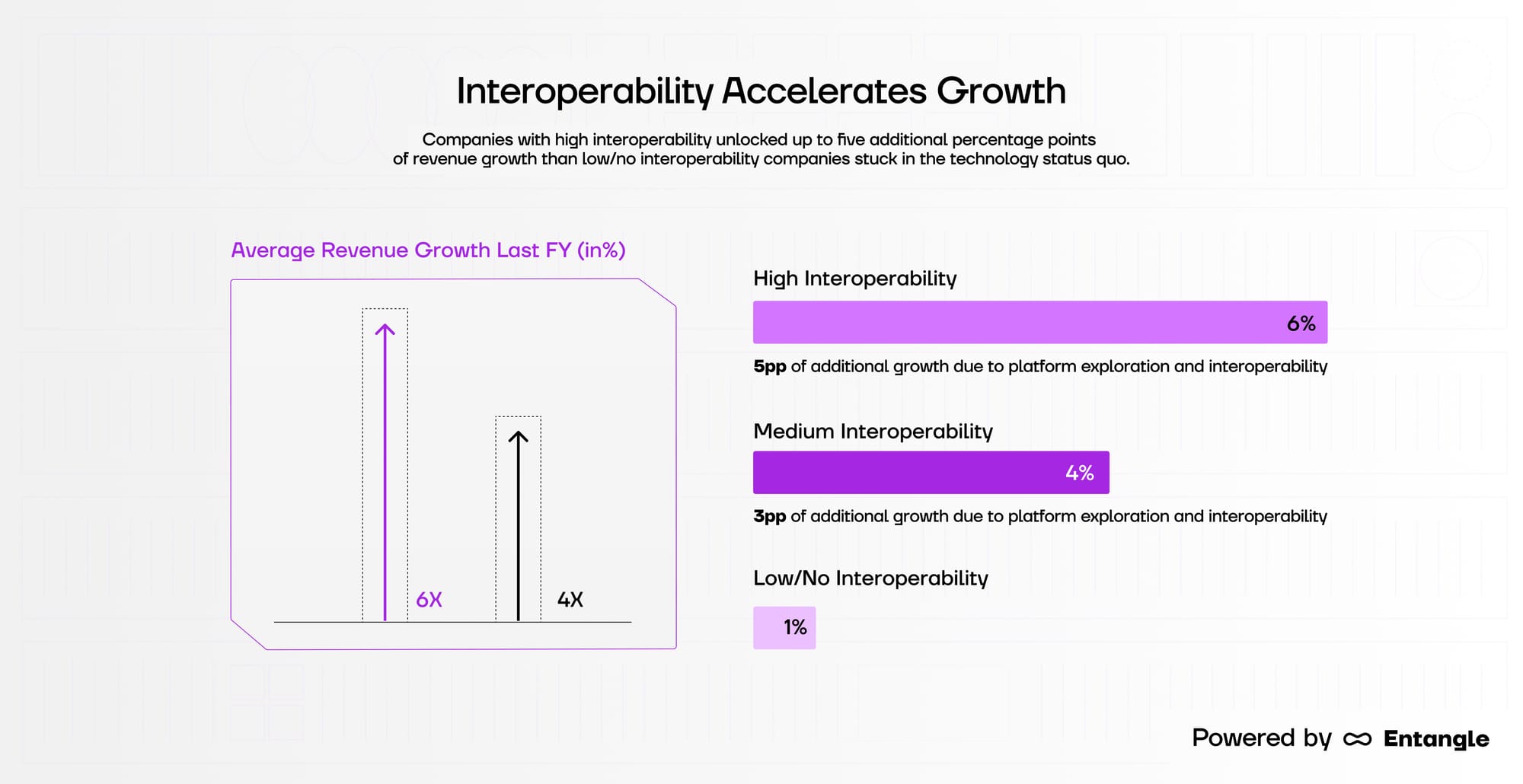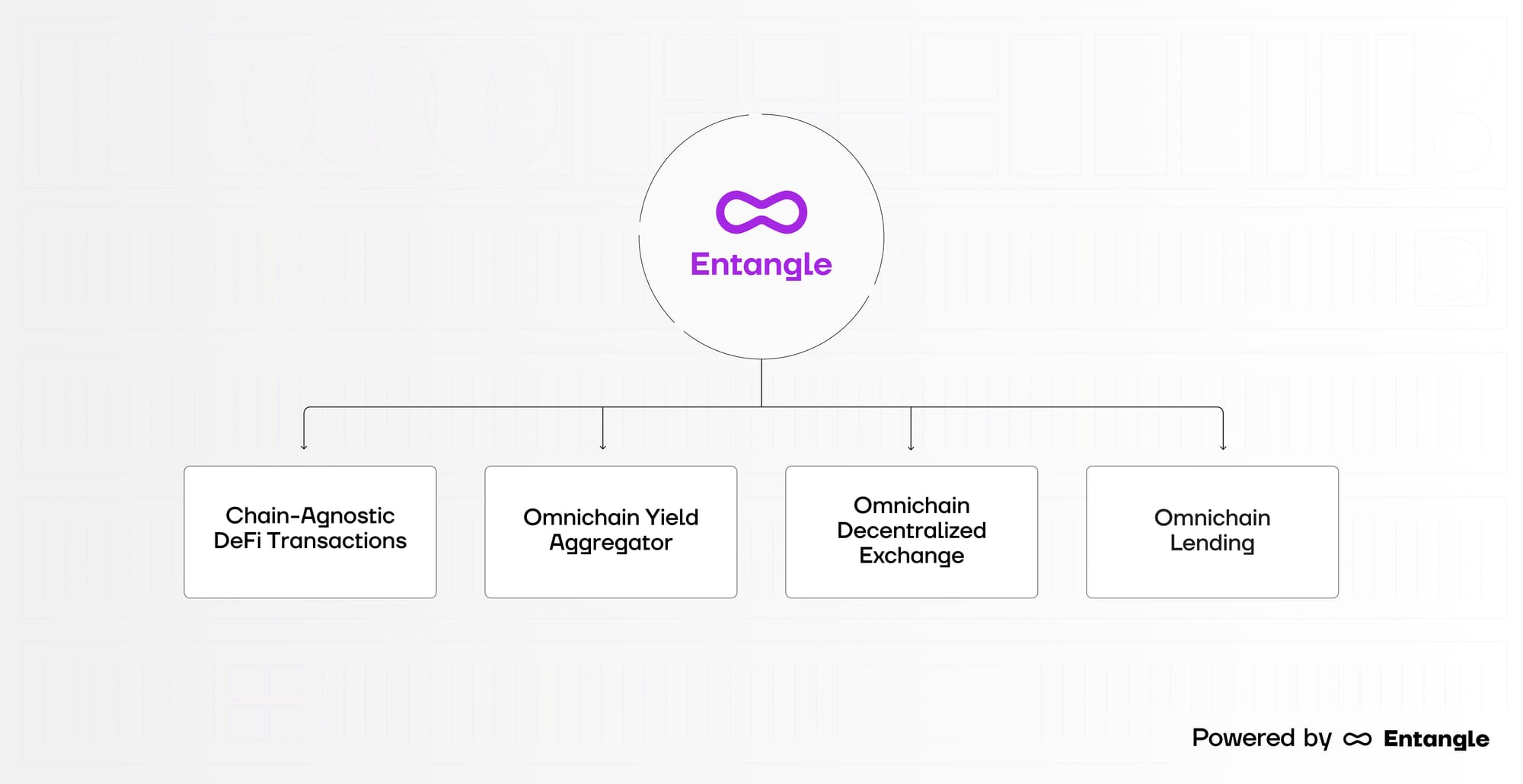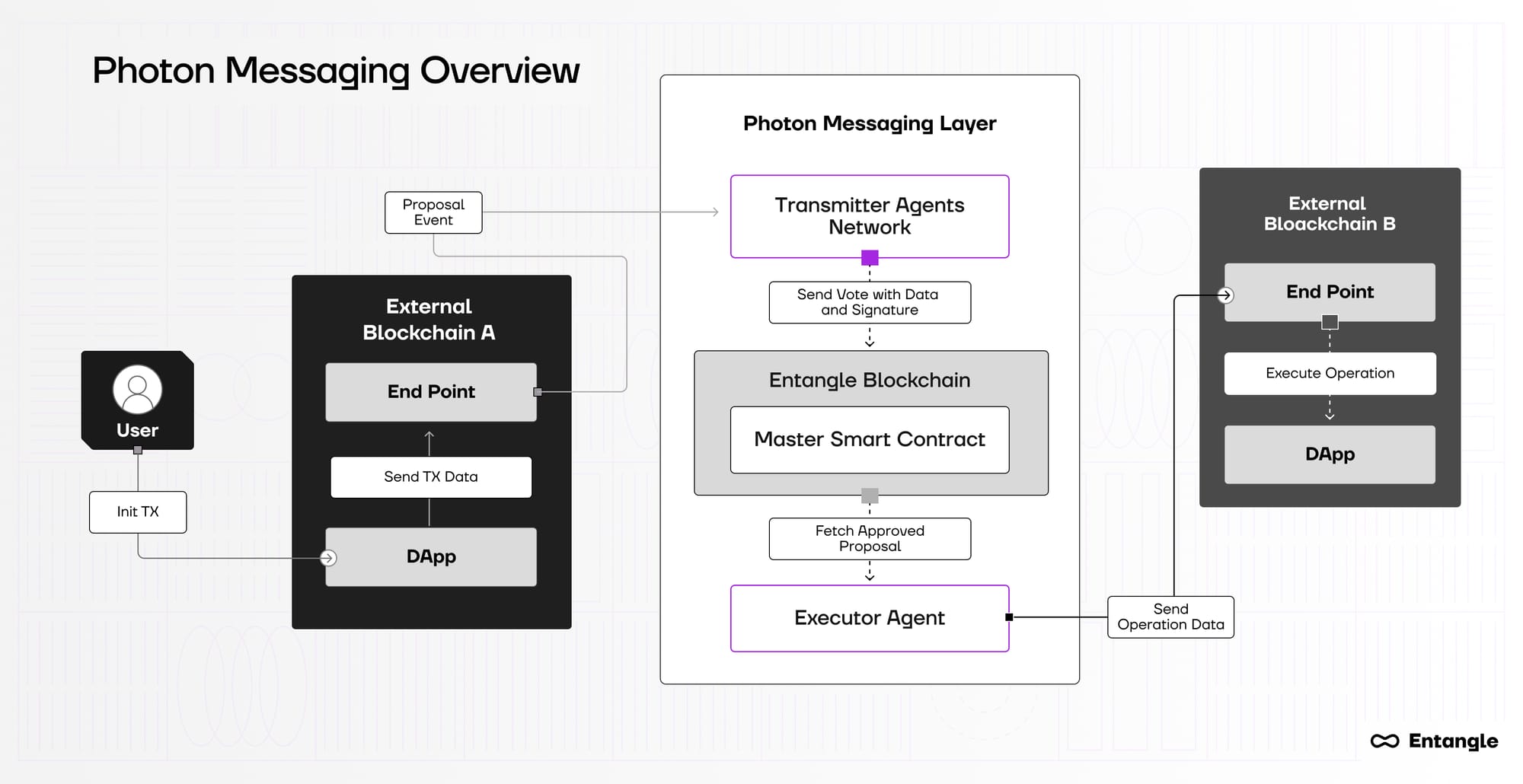Cross-Chain vs Multichain vs Omnichain
Learn about Entangle's mission to make interoperability accessible to all.

Interoperability has long been considered the holy grail of the cryptocurrency world. Although cross-chain and multichain solutions have made significant strides, they still face inherent weaknesses. The “Omnichain” approach aims to transcend these limitations, facilitating true and seamless interoperability between isolated blockchain networks.
In today’s blog, we will discuss the critical importance of interoperability and examine how the omnichain approach, championed by Entangle’s Photon Messaging, paves the way for seamless integration, unlocking immense value within the blockchain ecosystem.
The Importance of Interoperability
As per Accenture, interoperability is the “great unifier” since it enables businesses to move from siloed technology and fragmented data to connected solutions, agility and resiliency. In fact, as per the report, “companies with high interoperability grew revenue 6X faster than their peers with low interoperability and are set to unlock an additional five percentage points in annual revenue growth.”

Here are some more observations from the Accenture report when it comes to the benefits of interoperability:
- Improved Agility: Companies with high interoperability can pivot quickly and take advantage of new opportunities. This is because interoperability integrates critical business applications, turning tangled inputs into a single source of data truth. As a result, organizations are better equipped to sustain compressed transformations, making them more adaptable during times of uncertainty.
- Revenue Growth: Companies with high interoperability grow revenue six times faster than those with low or no interoperability. They also unlock up to five additional percentage points in annual revenue growth. This growth is attributed to the seamless integration of enterprise applications, which enables businesses to move from siloed technology and fragmented data to connected solutions.
- Efficiency and Productivity: High interoperability enhances efficiency by 12 percentage points in supply chain and operations improvements. It also increases employee productivity, with companies being 12 percentage points more likely to succeed in this area when it's a priority. This is achieved by reducing duplicative efforts and streamlining data sharing.
- Sustainability: High interoperability companies are 4 percentage points more successful in embracing sustainable business practices. This is due to better management of dependencies and improved visibility across business processes, which leads to more sustainable operations.
- Innovation and ROI: Interoperability ensures that cutting-edge innovation reaches the business faster, increasing the return on investment (ROI) by 7%. This is achieved by creating in-context connections and reducing the time spent toggling between applications.
So, it’s safe to say that interoperability has been a major driver in revenue and overall operations. Even in the world of blockchain and cryptocurrency, interoperability is a crucial element.
Different blockchain networks tend to operate independently, leading to silos where information and assets are not easily moved across different chains. Interoperability is essential for achieving a more connected and collaborative decentralized ecosystem.
While many great steps have been taken to increase interoperability (the DeFi summer of 2020 comes to mind when composability and interoperability unlocked a multi-billion dollar decentralized finance market), we are still merely scratching the surface. While cross-chain and multichain solutions have made notable contributions, they come with their own limitations. An omnichain approach, like Entangle’s Photon Messaging, may be the key to unlocking the full potential of the crypto sector.
Before diving deeper, it’s essential to understand the differences between the cross-chain, multichain, and omnichain approaches.
Cross-Chain vs Multichain vs Omnichain – Keys to Interoperability
Cross-chain, multichain, and omnichain are various approaches that crypto projects can take to achieve interoperability. Let’s examine them.
#1 The Cross-Chain Approach
A cross-chain bridge facilitates the transfer of data and assets between different, unrelated blockchain networks. These bridges act as external entities, utilizing oracles and validators for transaction verification. This architecture supports the creation of native cross-chain applications, where a single dApp can interact with multiple smart contracts across different blockchains, leveraging each network's unique capabilities while maintaining synchronization.
The core mechanisms of cross-chain technology include burn and mint, where assets are burned on the original chain and minted on the new chain; lock and mint, where assets are locked in a smart contract on one chain and corresponding wrapped tokens are minted on the target chain; and lock and unlock, where assets locked on one chain unlock equivalent assets on another. These processes are governed by smart contracts, ensuring secure and automated asset transfers.
Unfortunately, cross-chain bridges are notorious for their vulnerability. They often have a central storage point for funds that back the bridged assets on the receiving blockchain. Whether these funds are secured in a smart contract or by a centralized custodian, this central storage point becomes an attractive target for hackers.
#2 The Multichain Approach
In a multichain ecosystem, dApps operate across multiple blockchains, with each instance running separate smart contracts. This increases overall throughput as the ecosystem grows, accommodating more users with lower transaction costs. This approach involves linking multiple blockchain networks, allowing them to interoperate while maintaining their independence.
The primary advantage of multichain architectures is their scalability. By employing multiple parallel chains, multichain platforms can significantly boost transaction throughput and dynamically allocate resources based on demand. Additionally, multichain systems offer customization, allowing developers to tailor each chain to specific use cases, optimizing performance and functionality.
This approach enhances the efficiency of blockchain networks and provides robust security by isolating transactions and smart contracts, reducing the potential impact of breaches. However, the drawback here is that protocol liquidity gets fragmented across different networks, making this approach capitally inefficient.
#3 The Omnichain Approach
The omnichain approach aims to connect all blockchain networks, regardless of their smart contract technology. Think of it as an underground tunnel that supports multiple Layer 1 chains. This universal connector ensures seamless interoperability and minimal fragmentation, enabling dApps and networks to coexist without compatibility issues. The objective is to create a unified web3 experience with enhanced user experience and complete interoperability.
Unlike multichain dApps that operate under the same Layer 1, omnichain technology transcends individual base-layer networks. By establishing a network of connectivity, omnichain removes the limitations of individual chains, allowing different blockchains to interact without barriers. This approach can significantly enhance connectivity and functionality within the blockchain ecosystem, potentially leading to a more cohesive and efficient decentralized environment.

Applications of Omnichain Systems
Let’s go through some applications and use cases of omnichain systems.
Chain-Agnostic DeFi Transactions
Omnichain infrastructure facilitates chain-agnostic transactions in DeFi, enabling seamless transactions across different blockchains. Users can leverage assets from one blockchain to participate in DeFi activities on another, opening up a broader range of investment opportunities and liquidity, creating a more interconnected and versatile DeFi ecosystem.
Omnichain Decentralized Exchange
Omnichain protocols can significantly enhance decentralized exchanges (DEXs) by aggregating liquidity from various DEXs operating on different blockchains. This provides users with a consolidated view of available trading pairs, improving their experience by allowing access to the best prices and more efficient transaction execution.
Unlike existing DEX designs that rely on wrapped tokens or intermediary sidechains, an omnichain DEX allows liquidity pools to exist on multiple chains. Users can deposit native assets into one pool and withdraw native assets from another, enabling seamless asset transfers between chains.
Omnichain Yield Aggregator
Yield farming involves providing liquidity to decentralized protocols in exchange for rewards. Omnichain can optimize yield farming by connecting liquidity pools on different blockchains, allowing users to deploy assets in farming strategies that span multiple chains. This maximizes potential returns and diversifies yield-generating opportunities. An omnichain yield aggregator can leverage the best yield opportunities from various ecosystems, providing access to high-yield opportunities and market inefficiencies across multiple chains.
Omnichain Lending
Omnichain protocols simplify the process of seizing opportunities on different chains without moving entire asset bases or engaging in complex borrowing and bridging processes. Users can keep their assets on one chain, like Ethereum, while lending them out and borrowing directly from the desired asset on another chain, such as Solana. This eliminates the need for costly intermediaries, making multi-chain lending more efficient and accessible.

How Entangle Enables Omnichain Functionality
Entangle enables omnichain functionality through its innovative suite of tools designed to seamlessly integrate and connect disparate blockchain networks. Central to Entangle's approach is Photon Messaging, which facilitates highly customizable and secure communication across both EVM and non-EVM networks.
Photon Messaging utilizes a network of Transmitter Agents to ensure effective communication. Transmitters source, aggregate, and transmit data from diverse on-chain and off-chain sources using sophisticated algorithms for data extraction, normalization, and packaging. This ensures high data fidelity and minimal latency, providing precise and timely information for smart contracts and other on-chain applications. Entangle's extensive Transmitter network supports efficient message relay across various sources and blockchains, fostering a vibrant and interconnected ecosystem.
Photon Messaging also employs "Endpoints" implemented as smart contracts on each supported chain, serving as a data and message transmission interface. These Endpoints allow developers to customize parameters such as the number of Transmitter Agents in the consensus process, preferred data sources, and data delivery methods. This adaptability enables Entangle to meet the unique requirements of diverse applications, providing a robust infrastructure for seamless integration across the blockchain ecosystem.

Conclusion
Pursuing true interoperability and scalability remains a critical objective for the blockchain industry, with omnichain protocols like Entangle leading the charge. While cross-chain and multichain solutions have made significant strides, they have inherent limitations, such as fragmented liquidity and security vulnerabilities. In contrast, the omnichain approach promises seamless integration and robust security, effectively bridging disparate blockchain networks.
Entangle’s network of Transmitter Agents and Endpoints ensures that data flows accurately and swiftly, empowering developers to create more versatile and resilient applications. This unified approach to blockchain interoperability enhances the user experience and sets the stage for unprecedented innovation and growth in the decentralized space.
With Entangle leading the charge, the vision of an omnichain and fully-interoperable blockchain ecosystem is within reach.